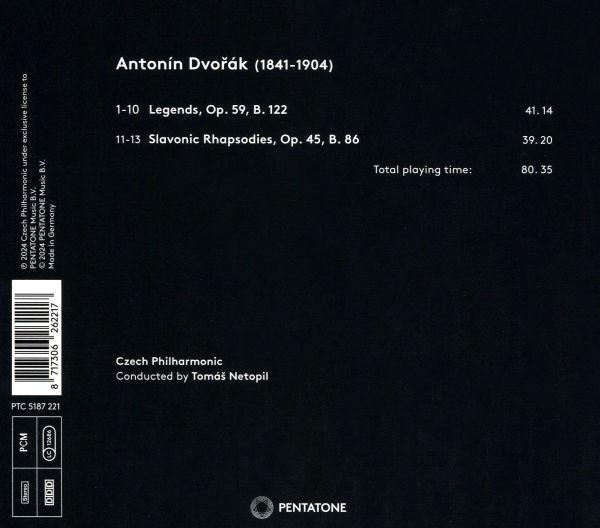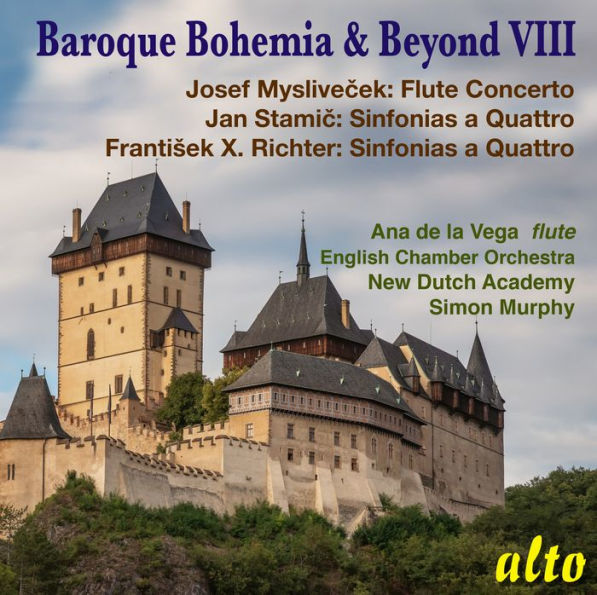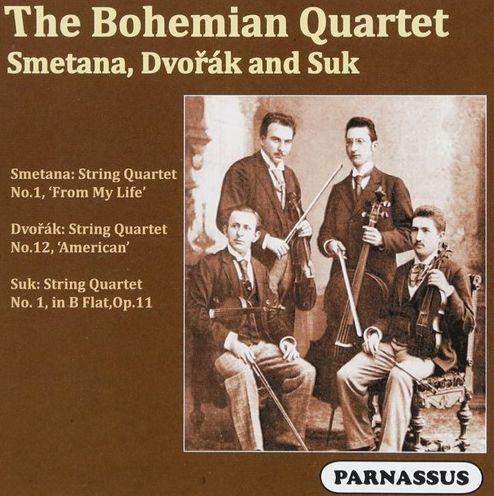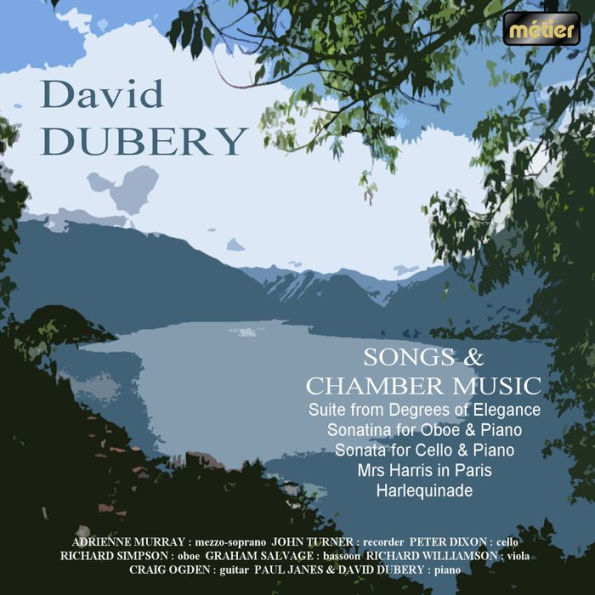Home
Dvorák: Legends & Rhapsodies
Barnes and Noble
Loading Inventory...
Dvorák: Legends & Rhapsodies in Bloomington, MN
Current price: $19.99

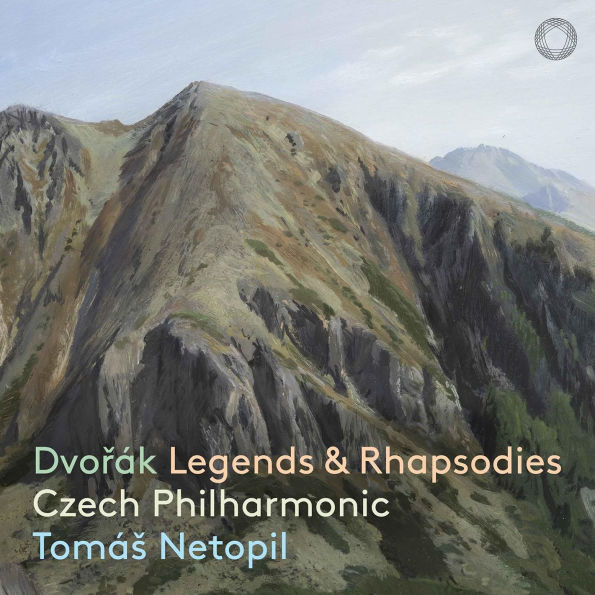
Dvorák: Legends & Rhapsodies in Bloomington, MN
Current price: $19.99
Loading Inventory...
Size: OS
Dvo¿ák
's
Legends, Op. 59
, and
Slavonic Rhapsodies, Op. 45
, date from the late 1870s and early 1880s, when the composer's developing nationalist style came into full flower. Both works were composed for piano duet, but
quickly orchestrated them when it became clear how much demand there was for music in a Czech national idiom. They aren't quite like the
"New World" Symphony
, but there's something immensely satisfying about hearing
working out his ideas on a small scale. The ten
Legends
are especially strong in these straightforward performances by conductor
Tomá¿ Netopil
and the
Czech Philharmonic
, surely the orchestra that knows them best. Debate continues as to what extent
was influenced by American music in his late works, hearing these, one can't help but be struck by how much of a pentatonic tinge there was in the composer's music already at this stage, when he had never entertained the idea of going to America and hearing American folk music. These are compact pieces, three or four minutes long, that show the composer working out a single implication of his new style, and they're fascinating. Hear the fourth
Legend, Molto
maestoso, with a tonally ambiguous brass opening resolving into gorgeous melody. The
Slavonic Rhapsodies
are a bit less clear in their organization, but they seem influenced by
Smetana
Má Vlast
tone poems (listen to the harp solo that opens the
third Rhapsody
) and show
taking a step toward incorporating that influence into his own idiom. The two works here were recorded at different times, but the wood-burnished sonic warmth of the Rudolfinum is in evident in both, makes for an album that any
lover will want to hear and own. Highly informative booklet notes by
Jan Smaczny
argue in favor of the physical album version. ~ James Manheim
's
Legends, Op. 59
, and
Slavonic Rhapsodies, Op. 45
, date from the late 1870s and early 1880s, when the composer's developing nationalist style came into full flower. Both works were composed for piano duet, but
quickly orchestrated them when it became clear how much demand there was for music in a Czech national idiom. They aren't quite like the
"New World" Symphony
, but there's something immensely satisfying about hearing
working out his ideas on a small scale. The ten
Legends
are especially strong in these straightforward performances by conductor
Tomá¿ Netopil
and the
Czech Philharmonic
, surely the orchestra that knows them best. Debate continues as to what extent
was influenced by American music in his late works, hearing these, one can't help but be struck by how much of a pentatonic tinge there was in the composer's music already at this stage, when he had never entertained the idea of going to America and hearing American folk music. These are compact pieces, three or four minutes long, that show the composer working out a single implication of his new style, and they're fascinating. Hear the fourth
Legend, Molto
maestoso, with a tonally ambiguous brass opening resolving into gorgeous melody. The
Slavonic Rhapsodies
are a bit less clear in their organization, but they seem influenced by
Smetana
Má Vlast
tone poems (listen to the harp solo that opens the
third Rhapsody
) and show
taking a step toward incorporating that influence into his own idiom. The two works here were recorded at different times, but the wood-burnished sonic warmth of the Rudolfinum is in evident in both, makes for an album that any
lover will want to hear and own. Highly informative booklet notes by
Jan Smaczny
argue in favor of the physical album version. ~ James Manheim
Dvo¿ák
's
Legends, Op. 59
, and
Slavonic Rhapsodies, Op. 45
, date from the late 1870s and early 1880s, when the composer's developing nationalist style came into full flower. Both works were composed for piano duet, but
quickly orchestrated them when it became clear how much demand there was for music in a Czech national idiom. They aren't quite like the
"New World" Symphony
, but there's something immensely satisfying about hearing
working out his ideas on a small scale. The ten
Legends
are especially strong in these straightforward performances by conductor
Tomá¿ Netopil
and the
Czech Philharmonic
, surely the orchestra that knows them best. Debate continues as to what extent
was influenced by American music in his late works, hearing these, one can't help but be struck by how much of a pentatonic tinge there was in the composer's music already at this stage, when he had never entertained the idea of going to America and hearing American folk music. These are compact pieces, three or four minutes long, that show the composer working out a single implication of his new style, and they're fascinating. Hear the fourth
Legend, Molto
maestoso, with a tonally ambiguous brass opening resolving into gorgeous melody. The
Slavonic Rhapsodies
are a bit less clear in their organization, but they seem influenced by
Smetana
Má Vlast
tone poems (listen to the harp solo that opens the
third Rhapsody
) and show
taking a step toward incorporating that influence into his own idiom. The two works here were recorded at different times, but the wood-burnished sonic warmth of the Rudolfinum is in evident in both, makes for an album that any
lover will want to hear and own. Highly informative booklet notes by
Jan Smaczny
argue in favor of the physical album version. ~ James Manheim
's
Legends, Op. 59
, and
Slavonic Rhapsodies, Op. 45
, date from the late 1870s and early 1880s, when the composer's developing nationalist style came into full flower. Both works were composed for piano duet, but
quickly orchestrated them when it became clear how much demand there was for music in a Czech national idiom. They aren't quite like the
"New World" Symphony
, but there's something immensely satisfying about hearing
working out his ideas on a small scale. The ten
Legends
are especially strong in these straightforward performances by conductor
Tomá¿ Netopil
and the
Czech Philharmonic
, surely the orchestra that knows them best. Debate continues as to what extent
was influenced by American music in his late works, hearing these, one can't help but be struck by how much of a pentatonic tinge there was in the composer's music already at this stage, when he had never entertained the idea of going to America and hearing American folk music. These are compact pieces, three or four minutes long, that show the composer working out a single implication of his new style, and they're fascinating. Hear the fourth
Legend, Molto
maestoso, with a tonally ambiguous brass opening resolving into gorgeous melody. The
Slavonic Rhapsodies
are a bit less clear in their organization, but they seem influenced by
Smetana
Má Vlast
tone poems (listen to the harp solo that opens the
third Rhapsody
) and show
taking a step toward incorporating that influence into his own idiom. The two works here were recorded at different times, but the wood-burnished sonic warmth of the Rudolfinum is in evident in both, makes for an album that any
lover will want to hear and own. Highly informative booklet notes by
Jan Smaczny
argue in favor of the physical album version. ~ James Manheim
